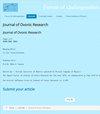氢等离子体多晶硅太阳能电池的缺陷钝化和h扩散由发射极区控制
IF 1.1
4区 材料科学
Q4 MATERIALS SCIENCE, MULTIDISCIPLINARY
引用次数: 0
摘要
如果光伏电池可以由薄的多晶硅(poly-Si)薄膜制成,则可以显著降低光伏电池的成本。尽管多晶硅薄膜的加氢处理对于获得高能量转换是必要的,但n+发射极在n+pp+多晶硅太阳能电池中通过氢扩散对缺陷钝化的作用尚未完全了解。在此基础上,分析了加氢温度和n+发射极掺杂量对开路电压(VOC)的影响。结果表明,当微波等离子体功率为650 W、加氢温度为400℃、加氢时间为60 min时,挥发性有机化合物(VOC)的挥发性有机化合物(VOC)的挥发性有机化合物(VOC)最高可达430 mV,提高了2.9倍。然而,观察到发射极区域的蚀刻,并且这种退化对于两种冷却方法是相似的。此外,氢化电池在惰性气体中退火30 min后,VOC随退火温度的变化而略有增加,达到40-80 mV。这些结果被解释为氢原子从等离子体氢化过程中产生的地下缺陷扩散到材料的主体中。此外,我们的研究结果清楚地表明,与大量掺磷的排放物相比,低掺磷排放物的VOC值要高得多。详细阐明了这些行为的起源。本文章由计算机程序翻译,如有差异,请以英文原文为准。
Defects passivation and H-diffusion controlled by emitter region in polysilicon solar cells submitted to hydrogen plasma
A significant cost reduction in photovoltaic cells could be achieved if they could be made from thin polycrystalline silicon (poly-Si) films. Despite hydrogenation treatments of poly-Si films are necessary to obtain high energy conversion, the role of the n+ emitter on defects passivation via hydrogen diffusion in n+pp+ polysilicon solar cells is not yet understood thoroughly. In this connection, influence of hydrogenation temperature and doping level of the n+ emitter on open-circuit voltage (VOC) were analyzed. It was found that VOC greatly improved by a factor of 2.9 and reached up to 430 mV at a microwave plasma power and hydrogenation temperature of 650 W and 400°C, respectively for a duration of 60 min. Moreover, slow cooling is more advantageous for high VOC compared to the rapid cooling. However, etching of the emitter region was observed, and this degradation is similar for both cooling methods. Furthermore, annealing of the hydrogenated cells in inert gas for 30 min revealed a slight increase in VOC, which reached 40-80 mV, depending on the annealing temperature. These results were explained by hydrogen atoms diffusing into the bulk of the material from subsurface defects that are generated during plasma hydrogenation process. Also, our findings show clearly that VOC values are much higher for a less doped phosphorus emitter compared to that of heavily doped. The origin of these behaviors was clarified in detail.
求助全文
通过发布文献求助,成功后即可免费获取论文全文。
去求助
来源期刊

Journal of Ovonic Research
MATERIALS SCIENCE, MULTIDISCIPLINARY-PHYSICS, APPLIED
CiteScore
1.90
自引率
20.00%
发文量
77
期刊介绍:
Journal of Ovonic Research (JOR) appears with six issues per year and is open to the reviews, papers, short communications and breakings news inserted as Short Notes, in the field of ovonic (mainly chalcogenide) materials for memories, smart materials based on ovonic materials (combinations of various elements including chalcogenides), materials with nano-structures based on various alloys, as well as semiconducting materials and alloys based on amorphous silicon, germanium, carbon in their various nanostructured forms, either simple or doped/alloyed with hydrogen, fluorine, chlorine and other elements of high interest for applications in electronics and optoelectronics. Papers on minerals with possible applications in electronics and optoelectronics are encouraged.
 求助内容:
求助内容: 应助结果提醒方式:
应助结果提醒方式:


